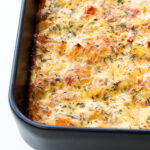
A golden baked butternut squash casserole brings cozy flavor to the table with its creamy texture and rich taste.
This guide walks you through making it at home so you can serve it for any occasion, big or small.
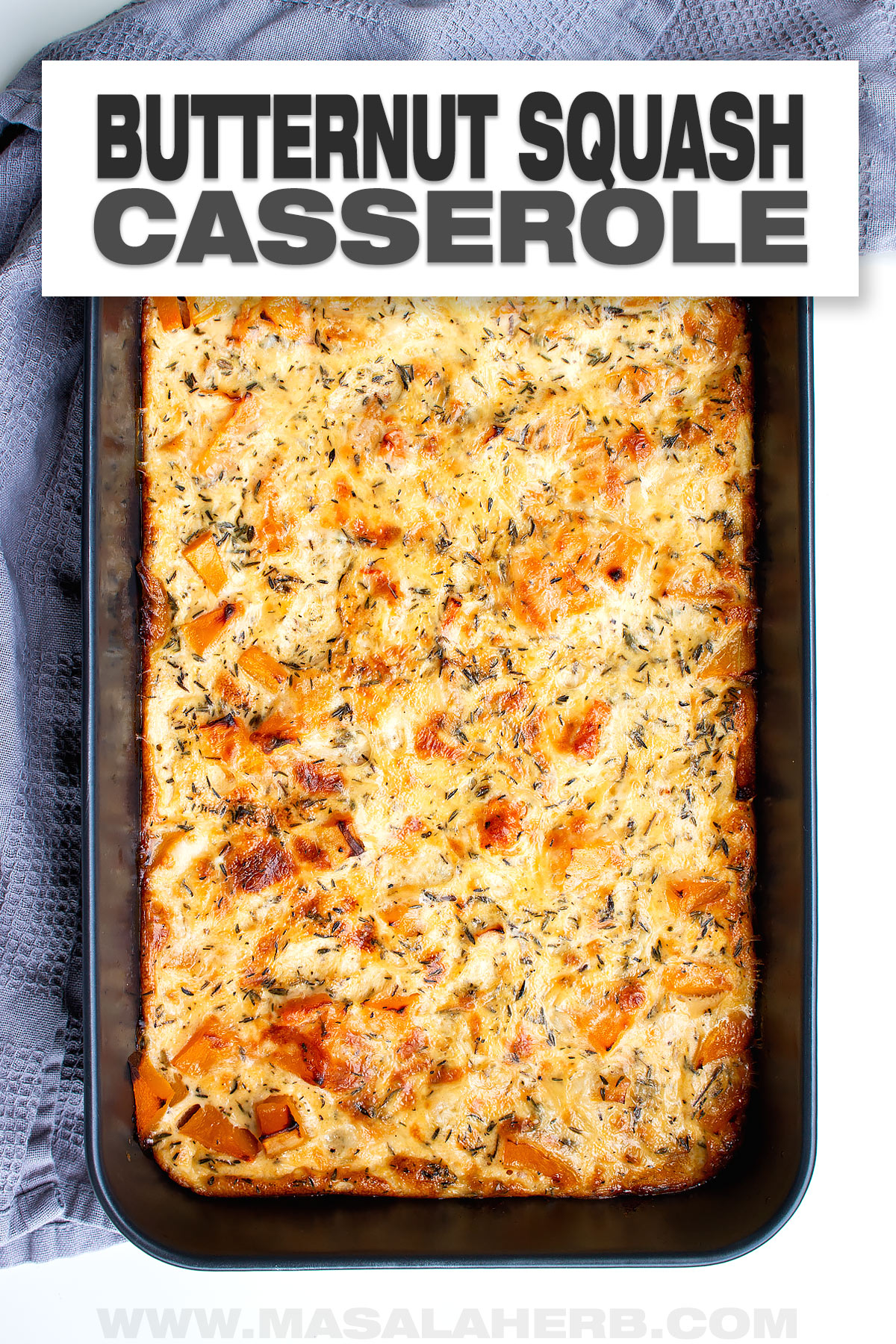
TL;DR
I love dump-and-bake vegetable casserole dishes, especially if it's a seasonal vegetable that I get to use.
Butternut squash makes for a delicious vegetable casserole, which you can enjoy as a meal or side dish, as per your needs.
The butternut squash is first roasted to release all the beautiful sweet notes. My special filling mix is then poured over the squash, and at last you just need to watch it get all bubbly baked.
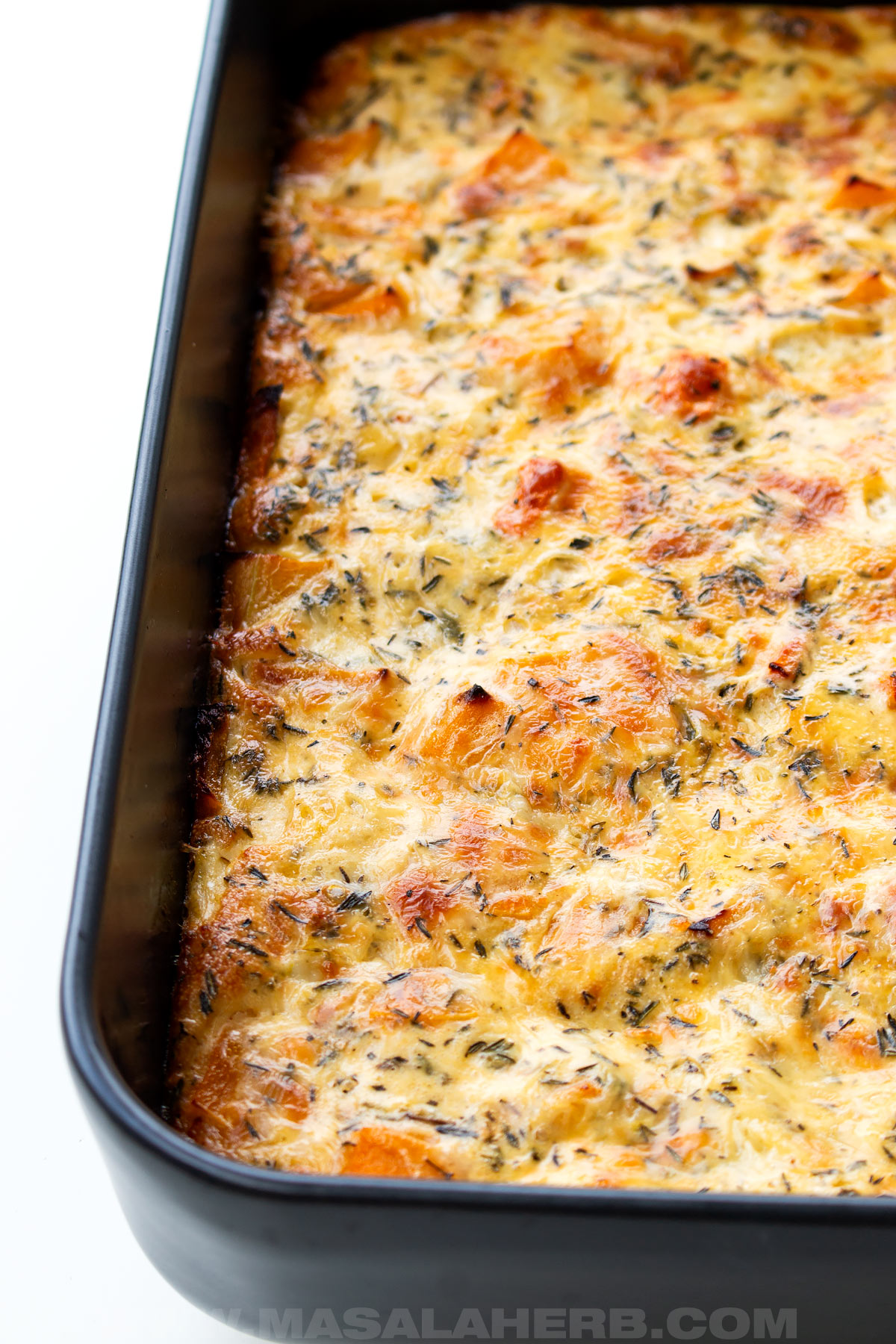
Ingredient Notes
- Butternut Squash — Medium-sized butternut squash.
- Eggs
- Black Pepper & Salt
- Thyme — To add a herbal Mediterranean taste.
- Rosemary — Ground, so that it incorporates into the dish. Complements the thyme and butternut squash.
- Table Cream — or heavy cream, whichever you get and prefer. I have used French crème fraîche as well, which turns out thicker (add some water with French crème fraîche).
- Shredded Cheese — I like to use mozzarella shreds.
- Dijon Mustard — Classic Dijon is my first choice, but you can use flavored Dijon mustards too from Edmond Fallot. I don't recommend a whole grain mustard because the mustard helps thicken it (mustard is an emulsifier).
- Olive Oil — To sprinkle some on top as a finish.
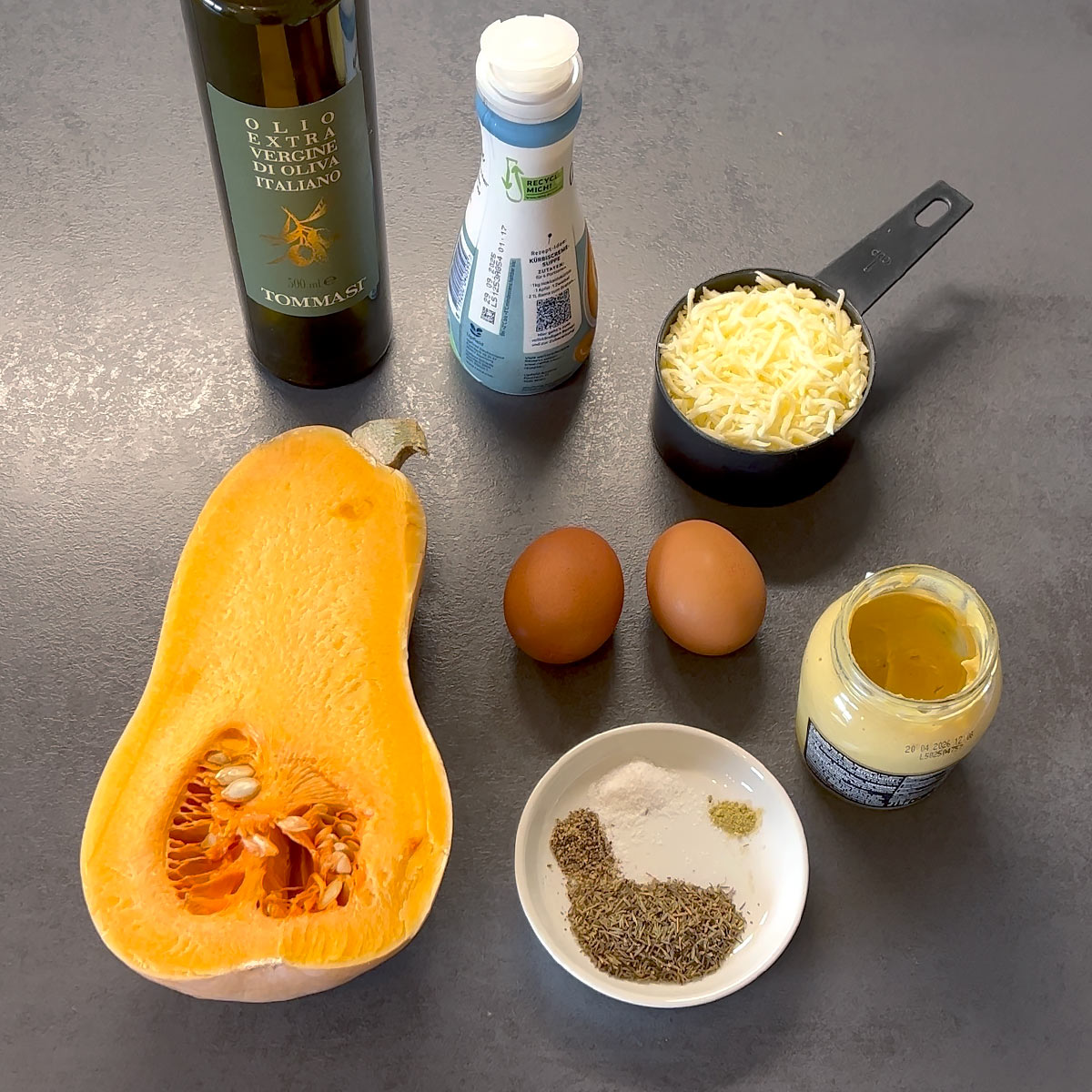
Process Overview
Step 1
Cut the butternut squash into two and scrape out the seeds to discard. Peel the squash and cut it into same-sized chunks.
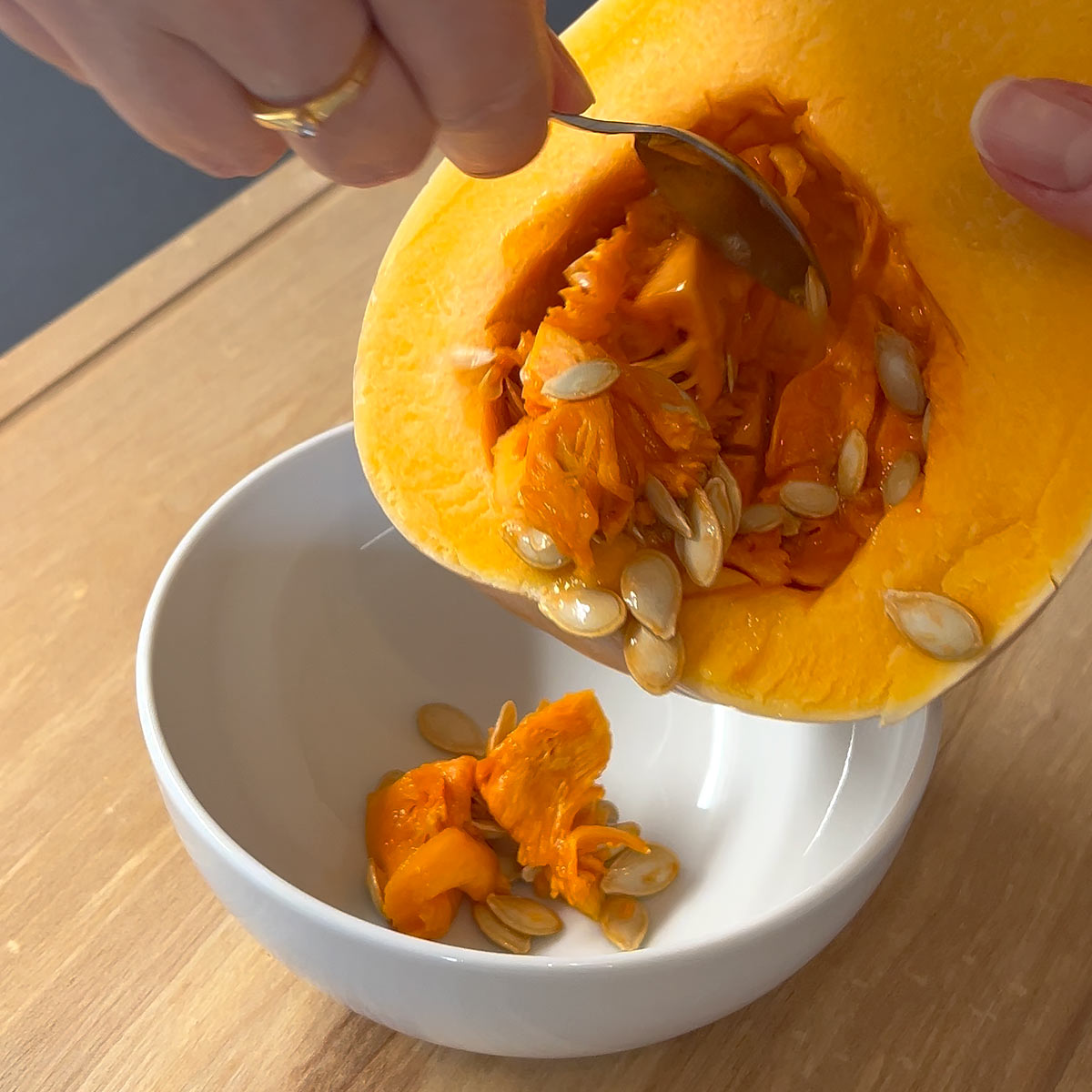
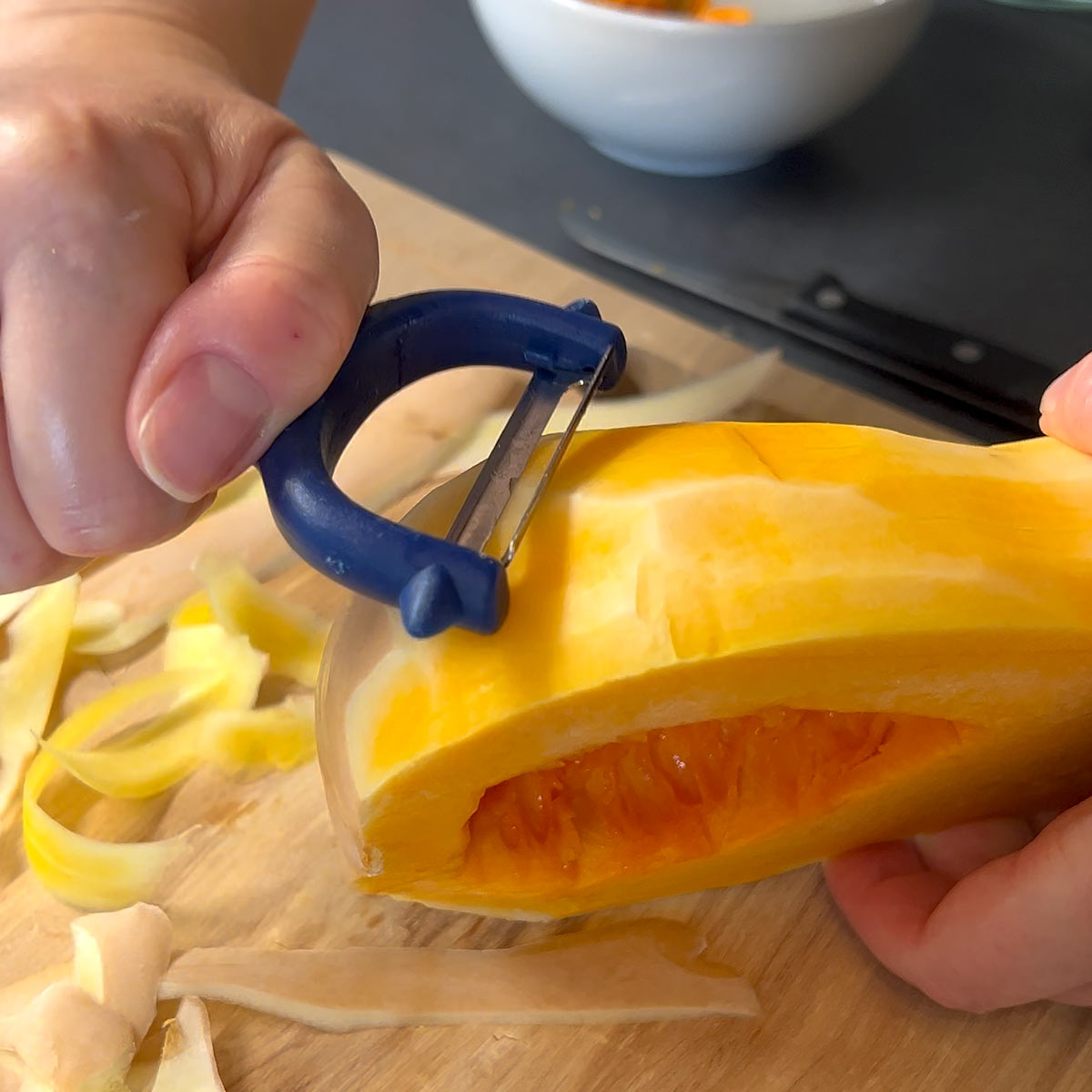

Step 2
Spread the butternut squash chunks in a baking dish and roast them until cooked through.
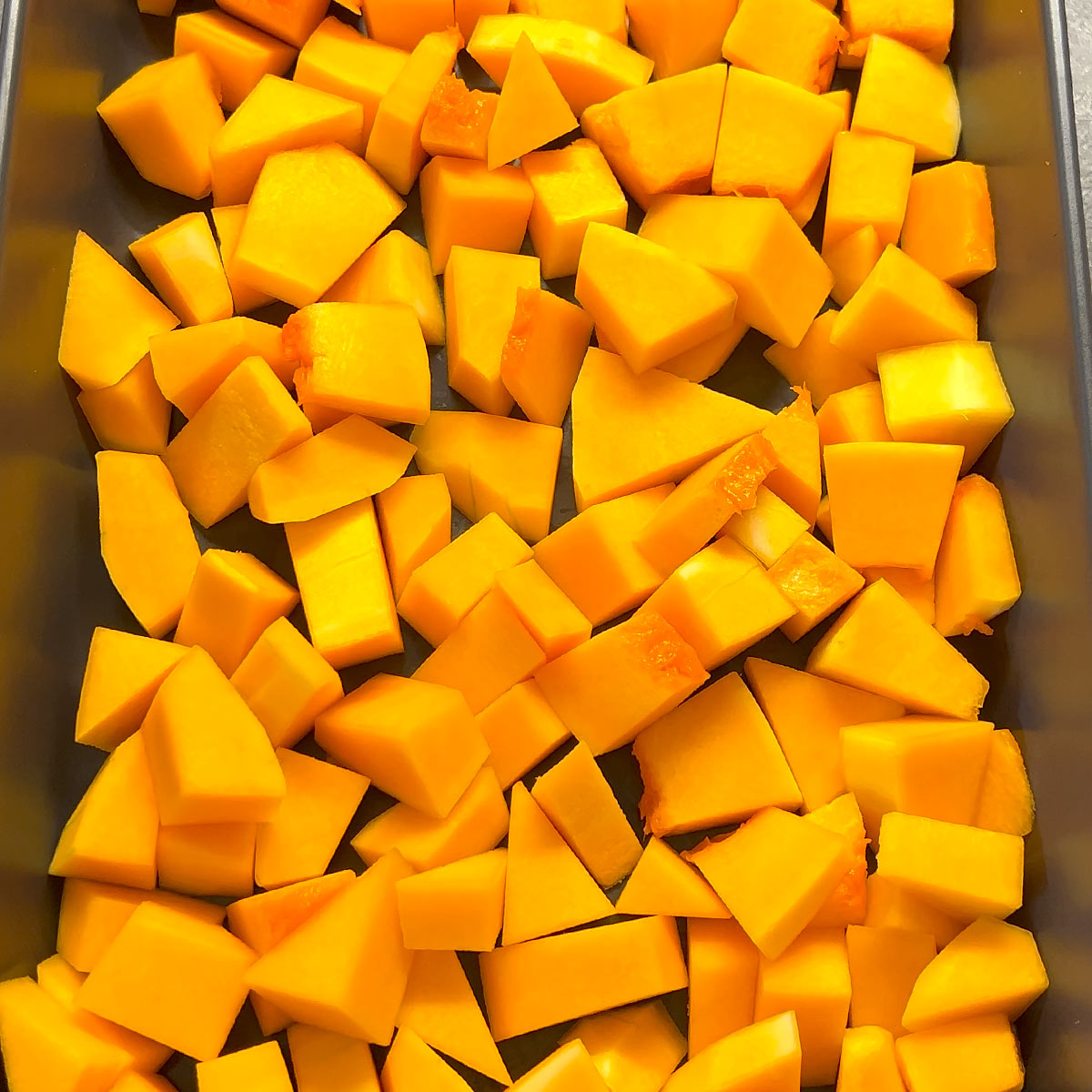
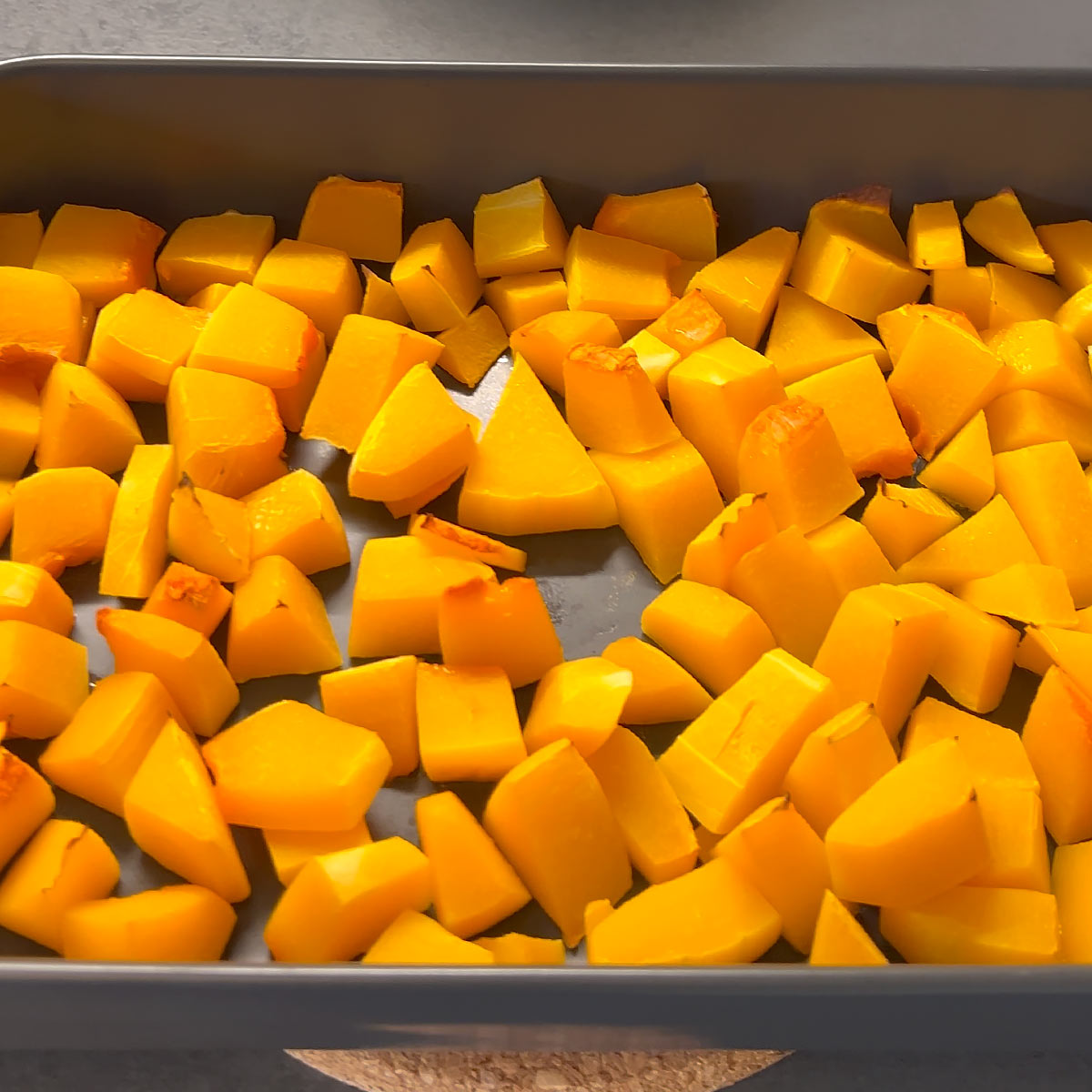
Step 3
Combine the egg, seasoning, cream, cheese, and mustard.
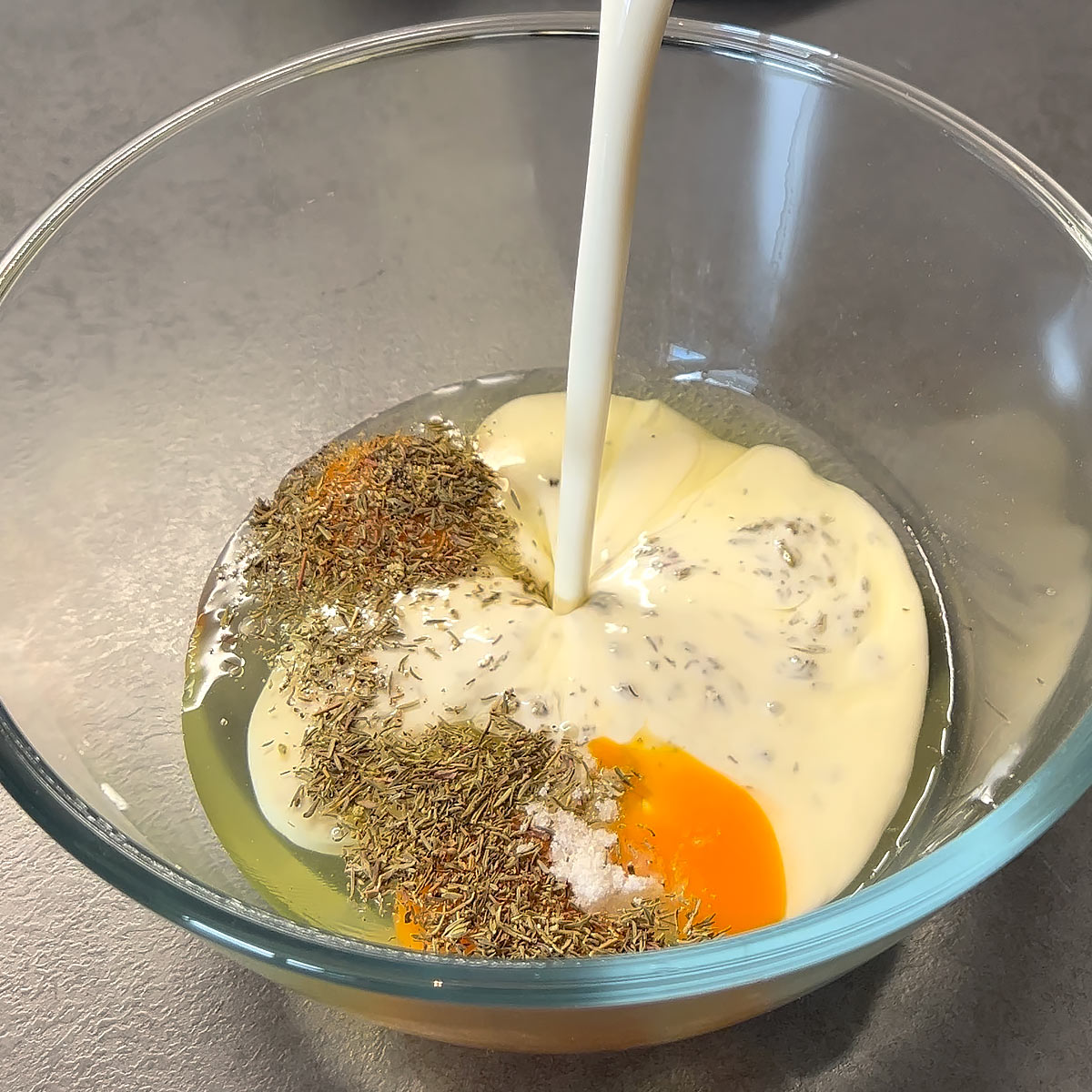
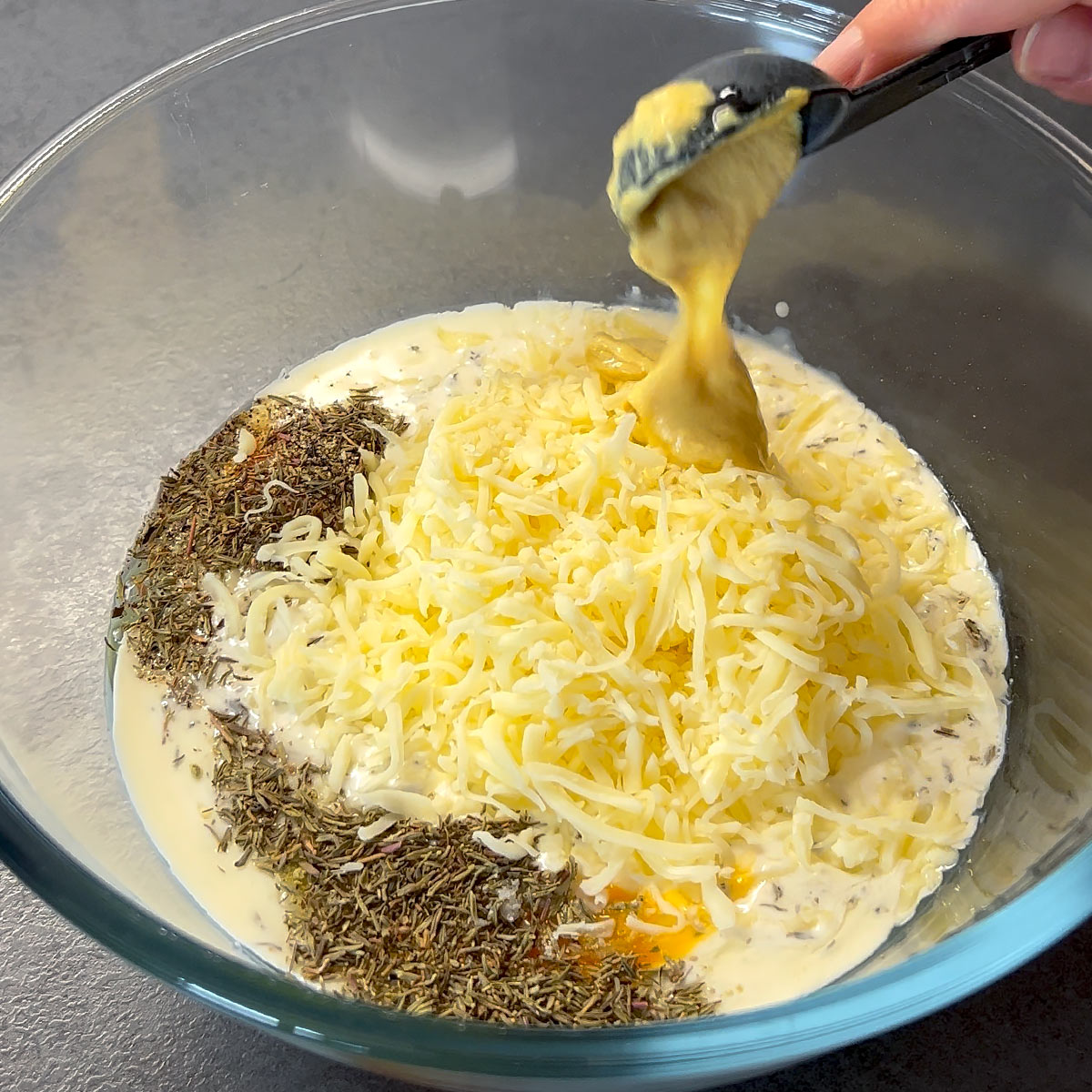

Step 4
Pour the cream egg mix over the roasted butternut squash chunks and spread it well.
Top with a drizzle of olive oil and bake until cooked through and golden at the top.
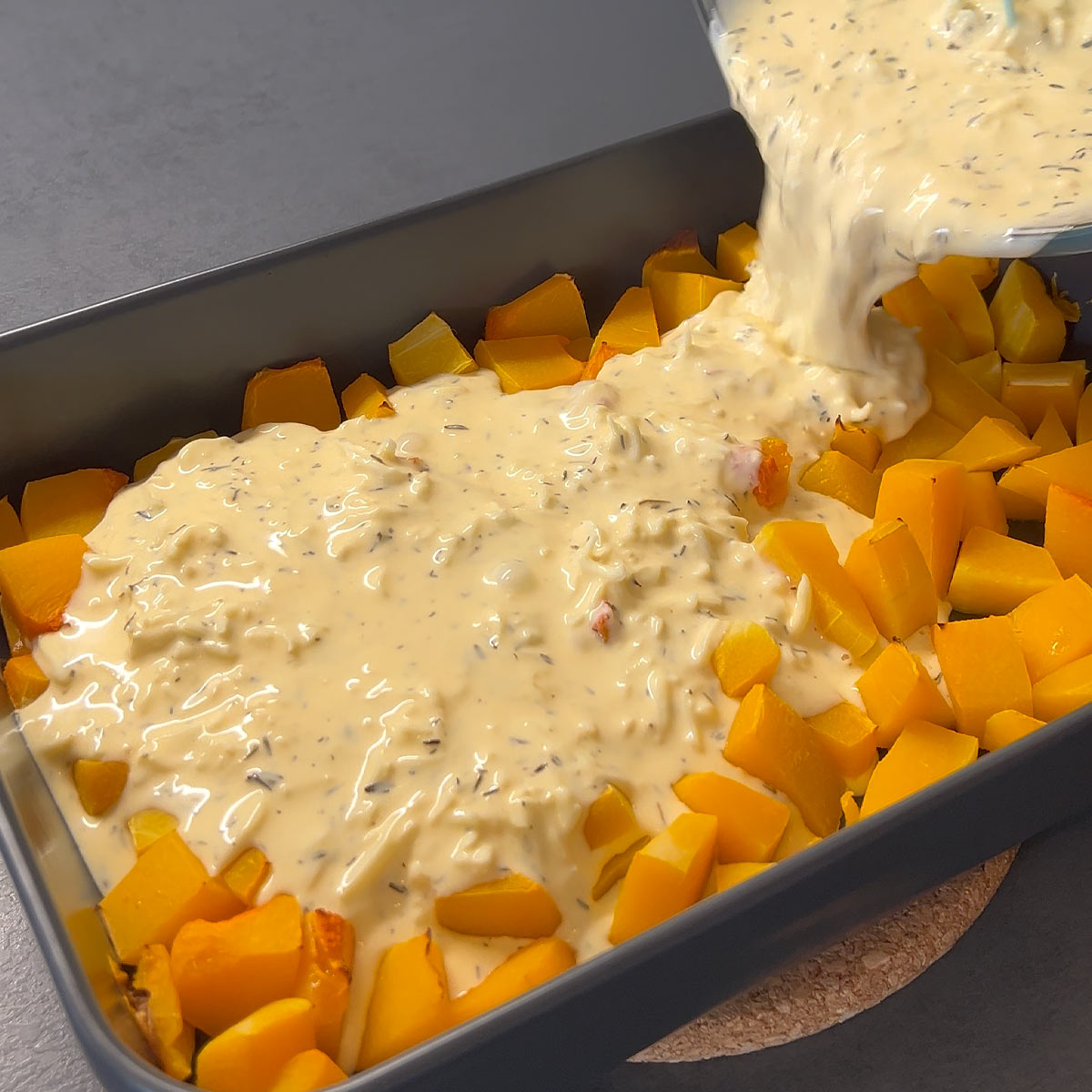
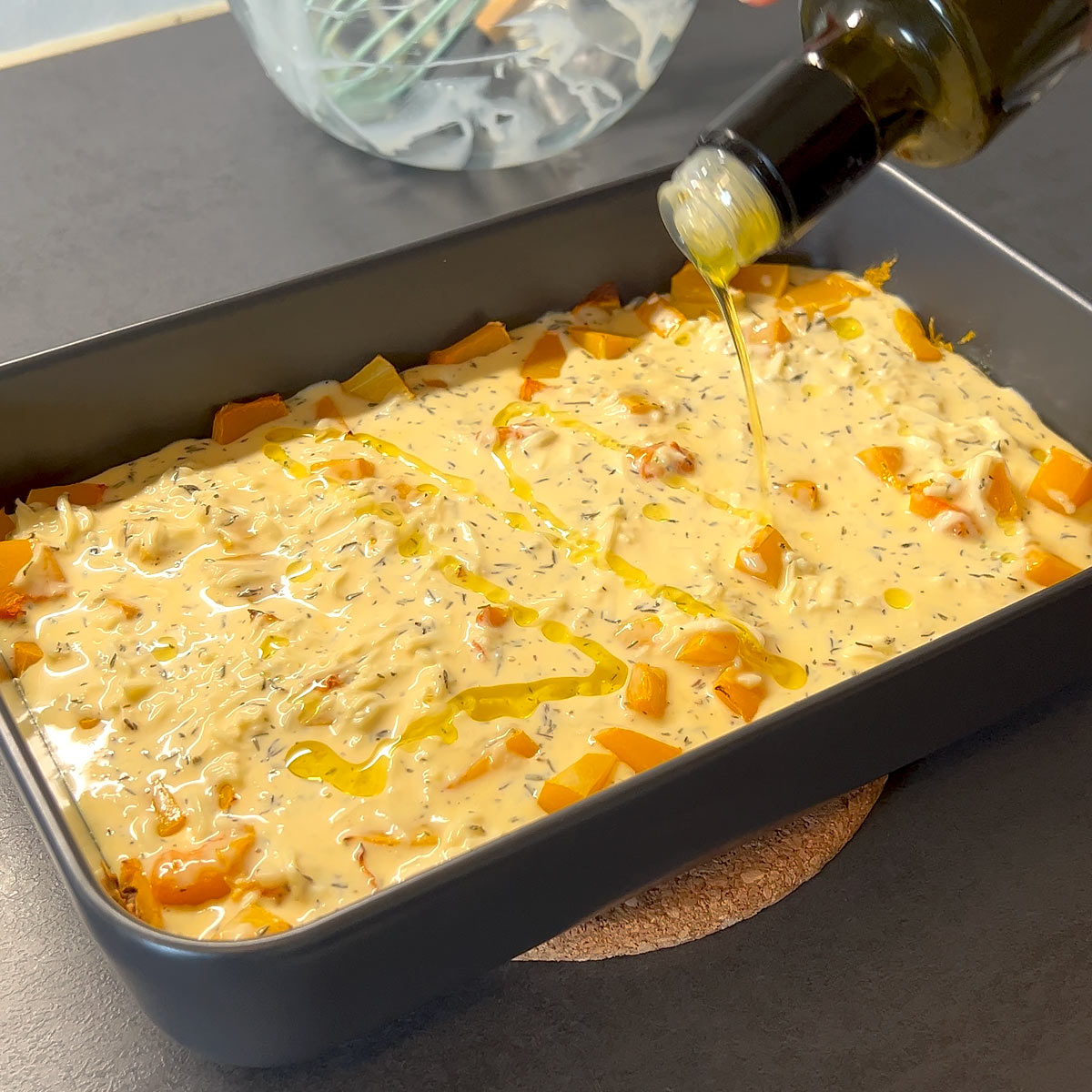
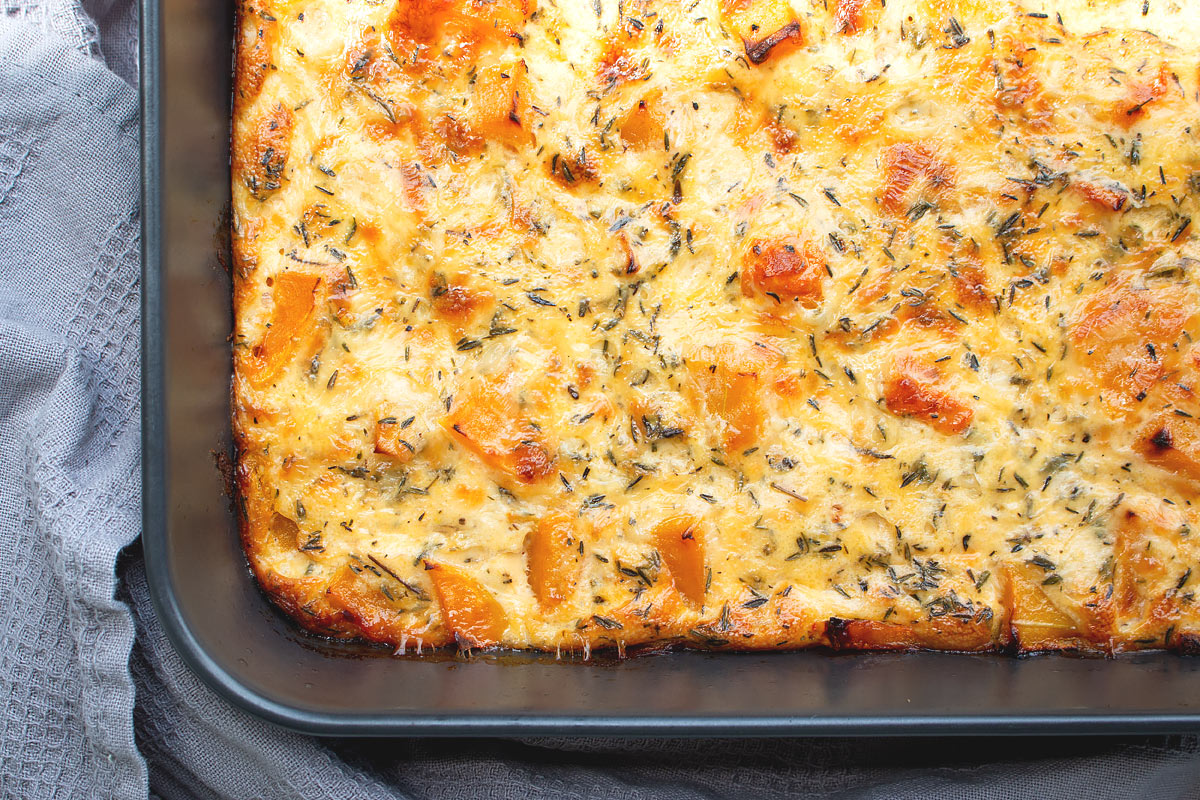
📖 Recipe
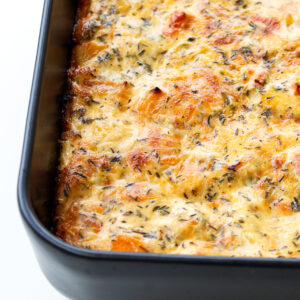
Butternut Squash Casserole Recipe
Ingredients
- 1 Medium Butternut Squash
- 2 Eggs
- ¼ Teaspoon Black Pepper Ground
- 1 Teaspoon Salt
- 2 Teaspoon Thyme Dried
- ⅛ Teaspoon Rosemary Dried Ground
- 1¼ Cup Table Cream
- 1 Cup Shredded Cheese
- 1 Tablespoon Dijon Mustard
- 1 Tablespoon Olive Oil
Instructions
- Preheat the oven to 350 degrees Fahrenheit (180 degrees Celsius).1 Medium Butternut Squash
- Prepare your butternut squash. Cut it in half and scrape out the seeds. Discard the seeds. I use a knife and a small spoon or a grapefruit spoon to loosen the seed pod. Peel the squash and cut it into larger, same-sized chunks.
- Arrange the butternut squash chunks in a baking dish.
- Roast the squash chunks in the oven for about 20 to 25 minutes or until tender.
- In the meanwhile, prepare the cream egg filling. In a bowl, combine the egg, the pepper, the salt, the thyme, the rosemary, the cream, the shredded cheese, and the mustard with a whisk.2 Eggs, ¼ Teaspoon Black Pepper Ground, 1 Teaspoon Salt, 2 Teaspoon Thyme Dried, ⅛ Teaspoon Rosemary Dried Ground, 1¼ Cup Table Cream, 1 Cup Shredded Cheese, 1 Tablespoon Dijon Mustard
- Pour the cream egg filling over the roasted butternut squash in the baking dish. Spread it out evenly so that all corners are covered.
- Sprinkle some olive oil over the dish.1 Tablespoon Olive Oil
- Bake the butternut squash casserole for about 25 minutes in the oven uncovered at 350 degrees Fahrenheit (180 degrees Celsius) or until golden at the top and cooked.
Equipment
- 9 x 13" Rectangular Baking Dish
- 8" Chef Knife
Nutrition
Serving
I love this dish as a stand-alone lighter meal. That means I usually like it with a little side salad to accentuate the flavors and to make it a complete meal.
In that manner, it's a dish that all vegetarians, low-carb, and low-calorie diet seekers will find appealing.
The second option is to prepare the butternut squash casserole as part of a holiday spread. Think Thanksgiving or Christmas side dish, and if you have some butternut squash frozen, Easter as well.

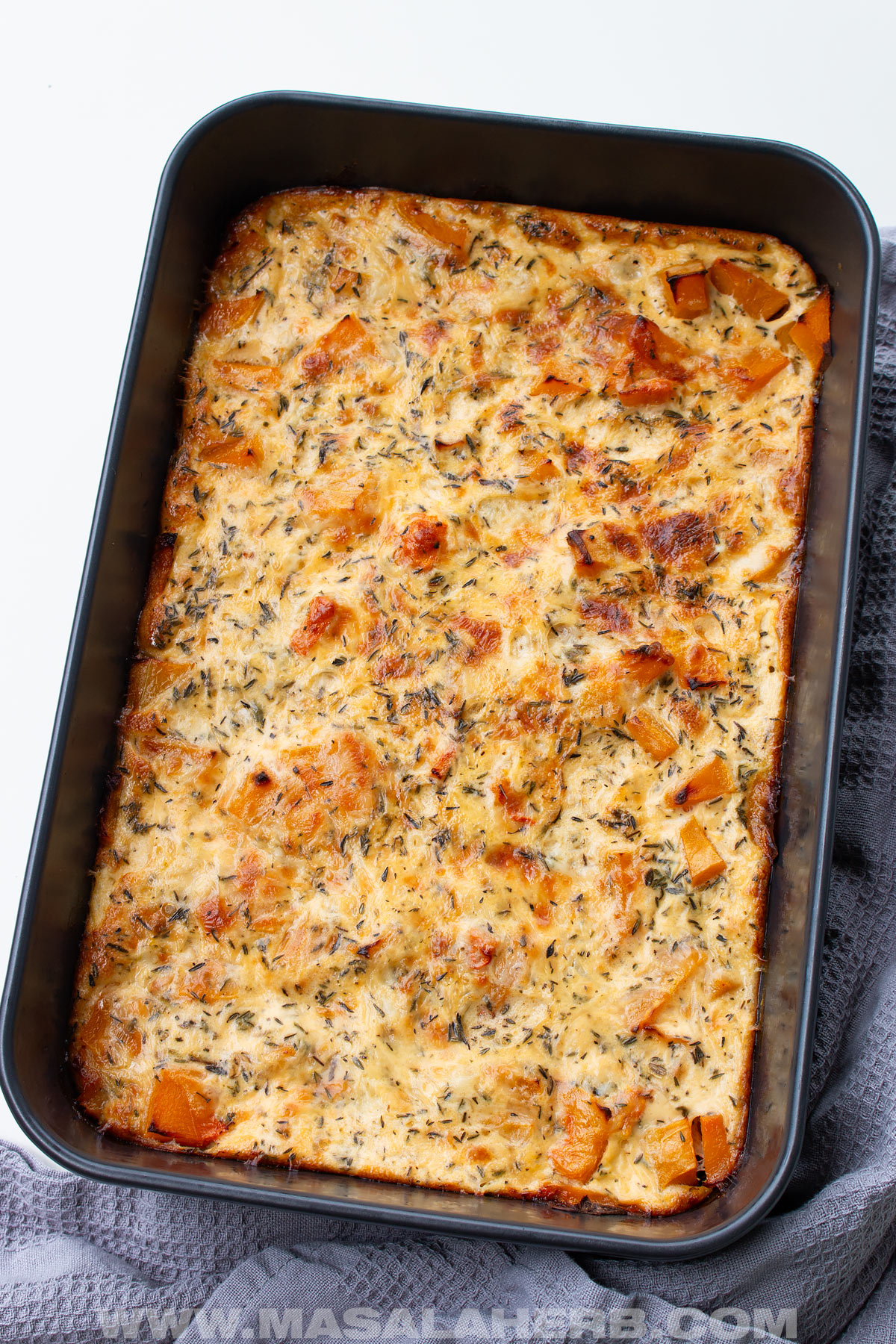
Storing
Leftovers can be stored in airtight containers and refrigerated for up to 5 days.
You have the option to freeze this dish.
Line a casserole dish with foil and prepare the recipe as directed. Place it in the freezer and let it freeze until solid. Once fully frozen, lift it out the foil makes this easy, and wrap it tightly in foil. Return it to the freezer and store it for up to 4 months.
When you're ready to bake, transfer the frozen casserole to the fridge and let it thaw for about 24 hours. Be sure it's completely thawed before baking to avoid a soggy texture.
More like this
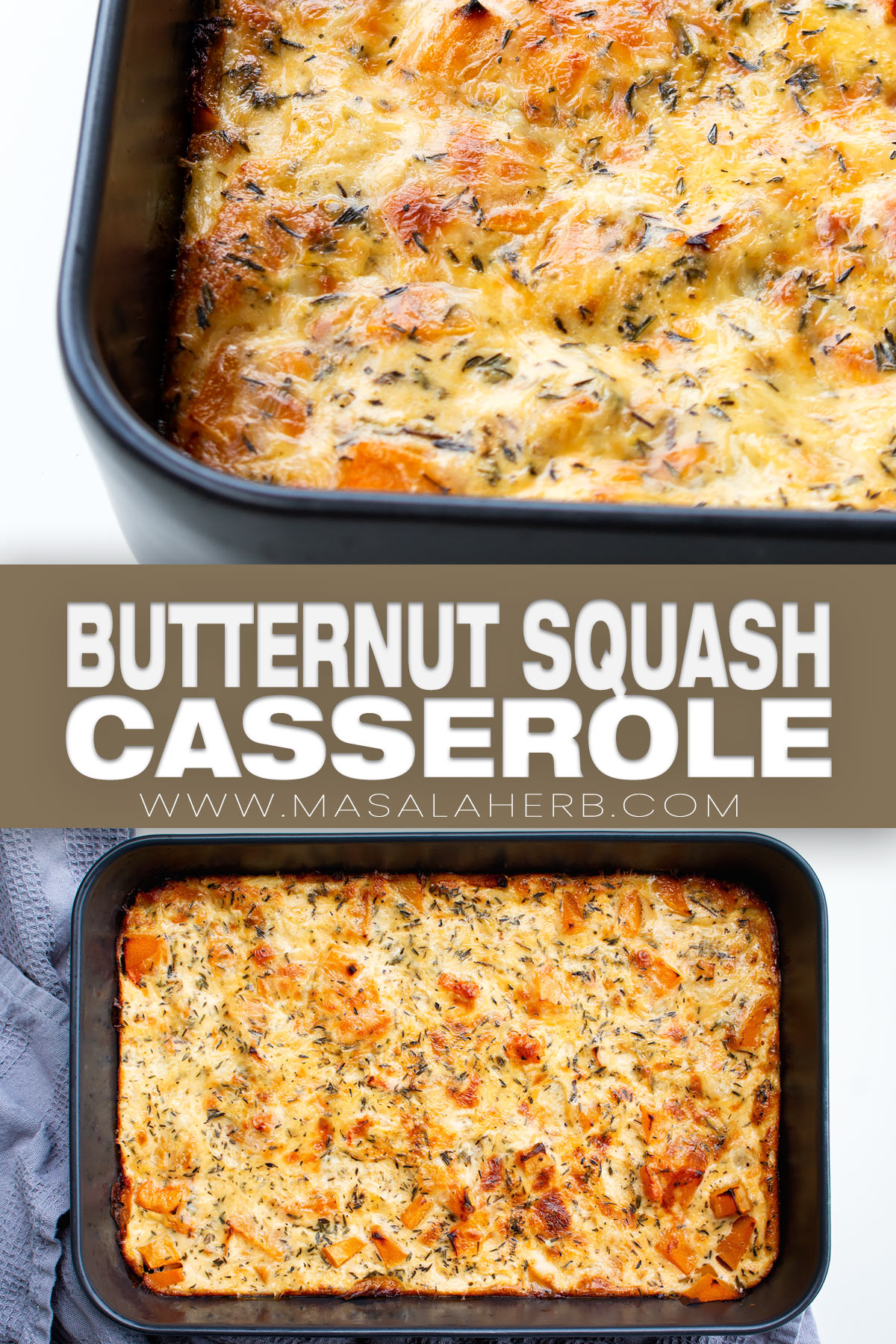

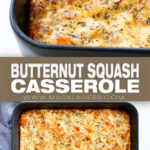
Comments
No Comments